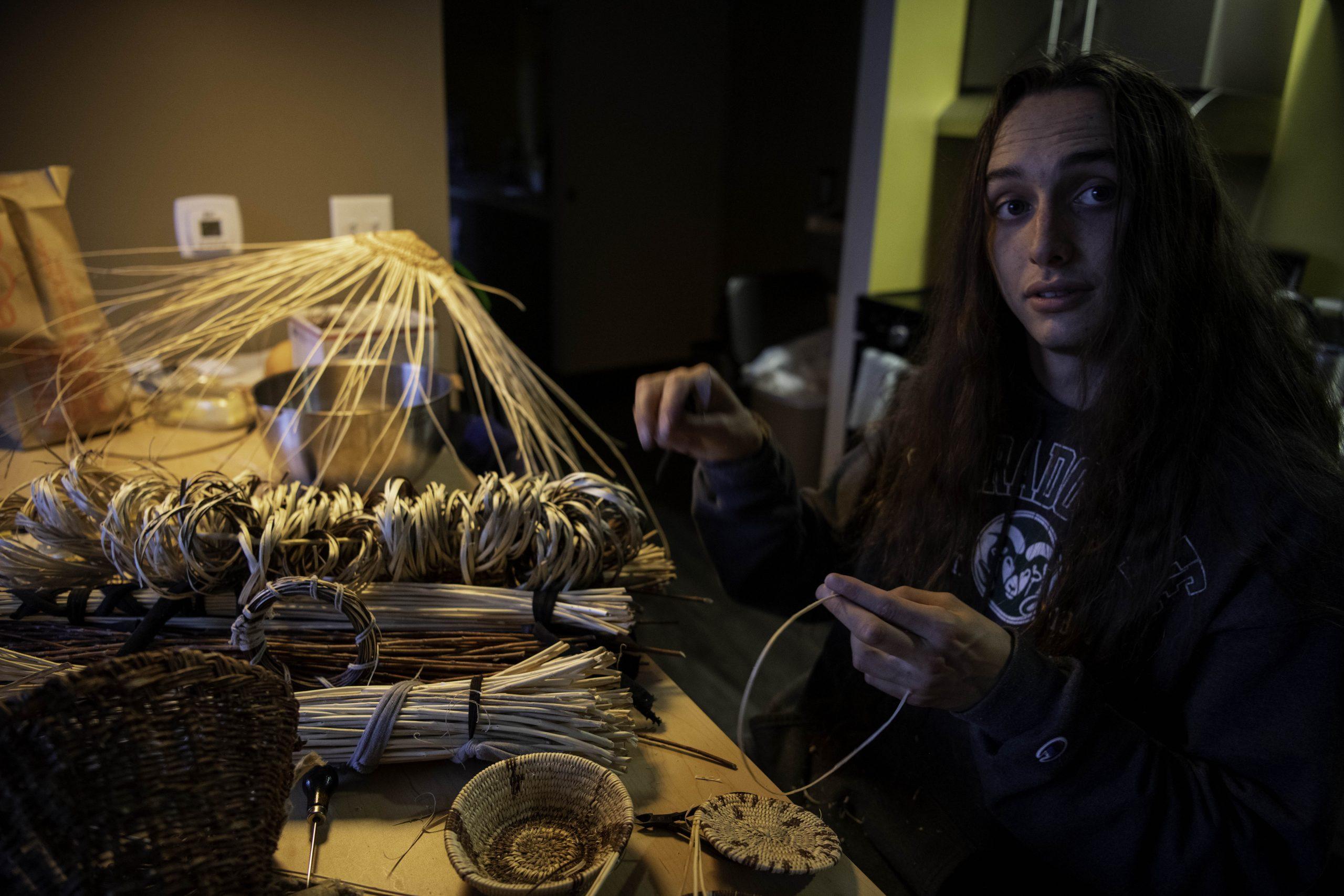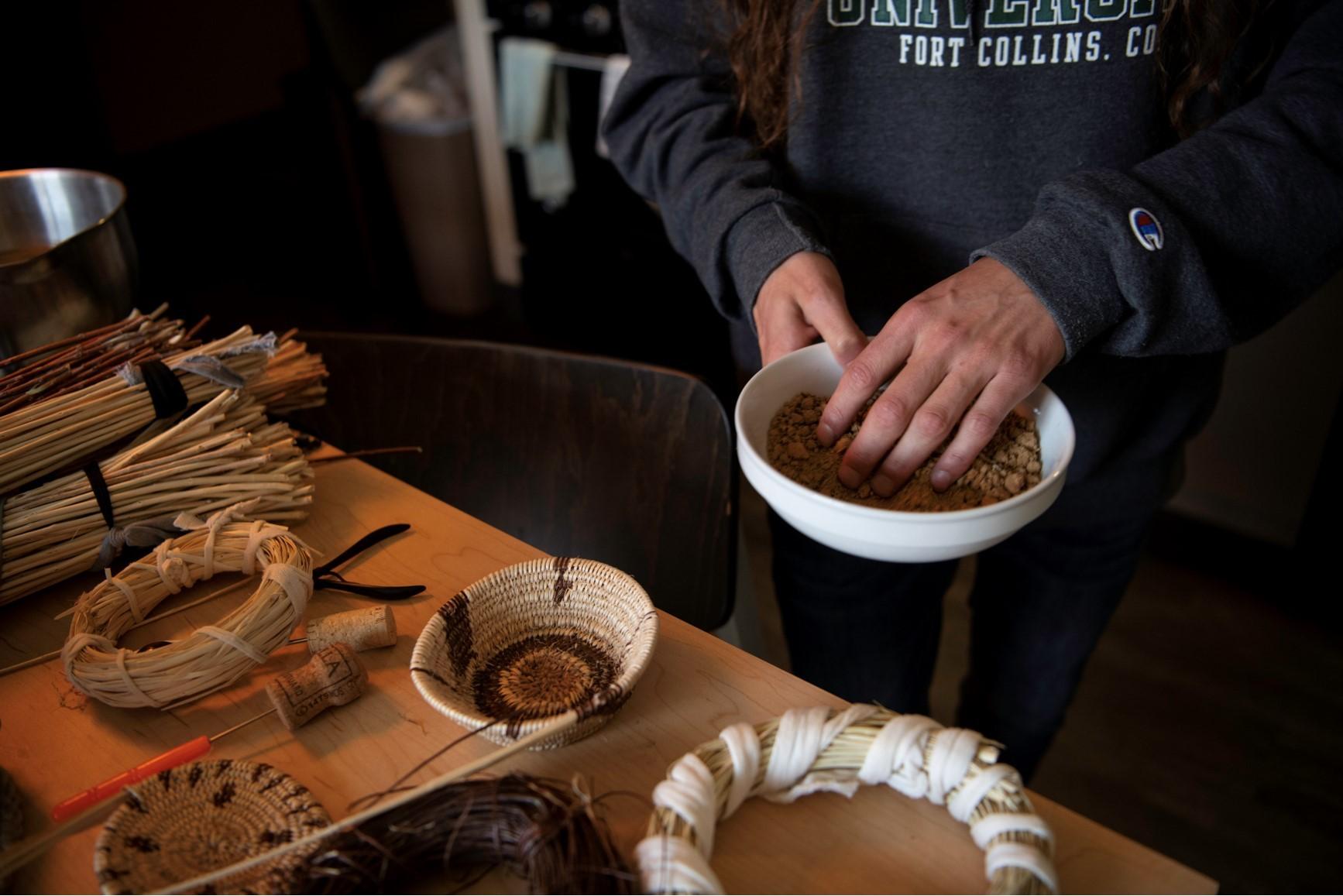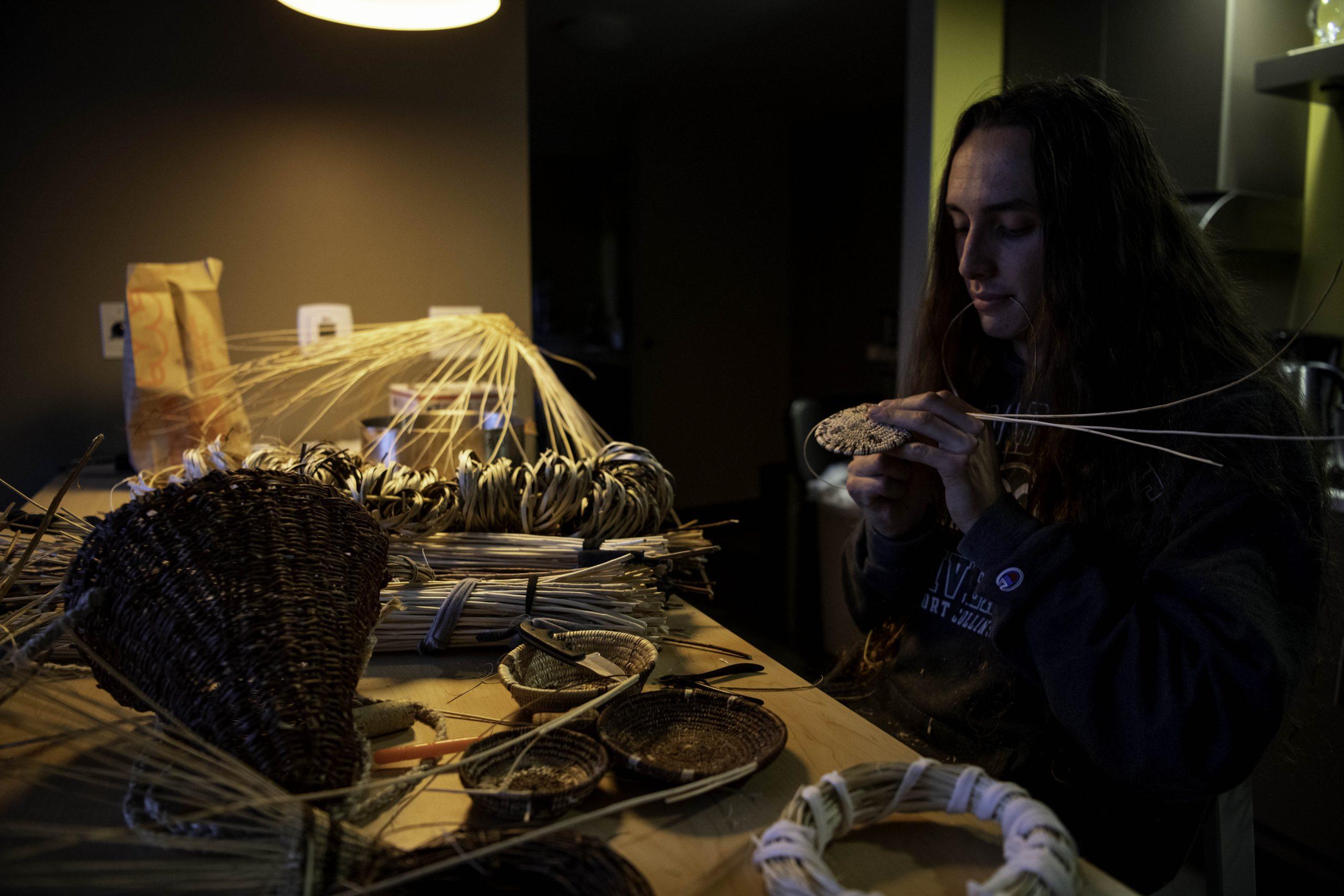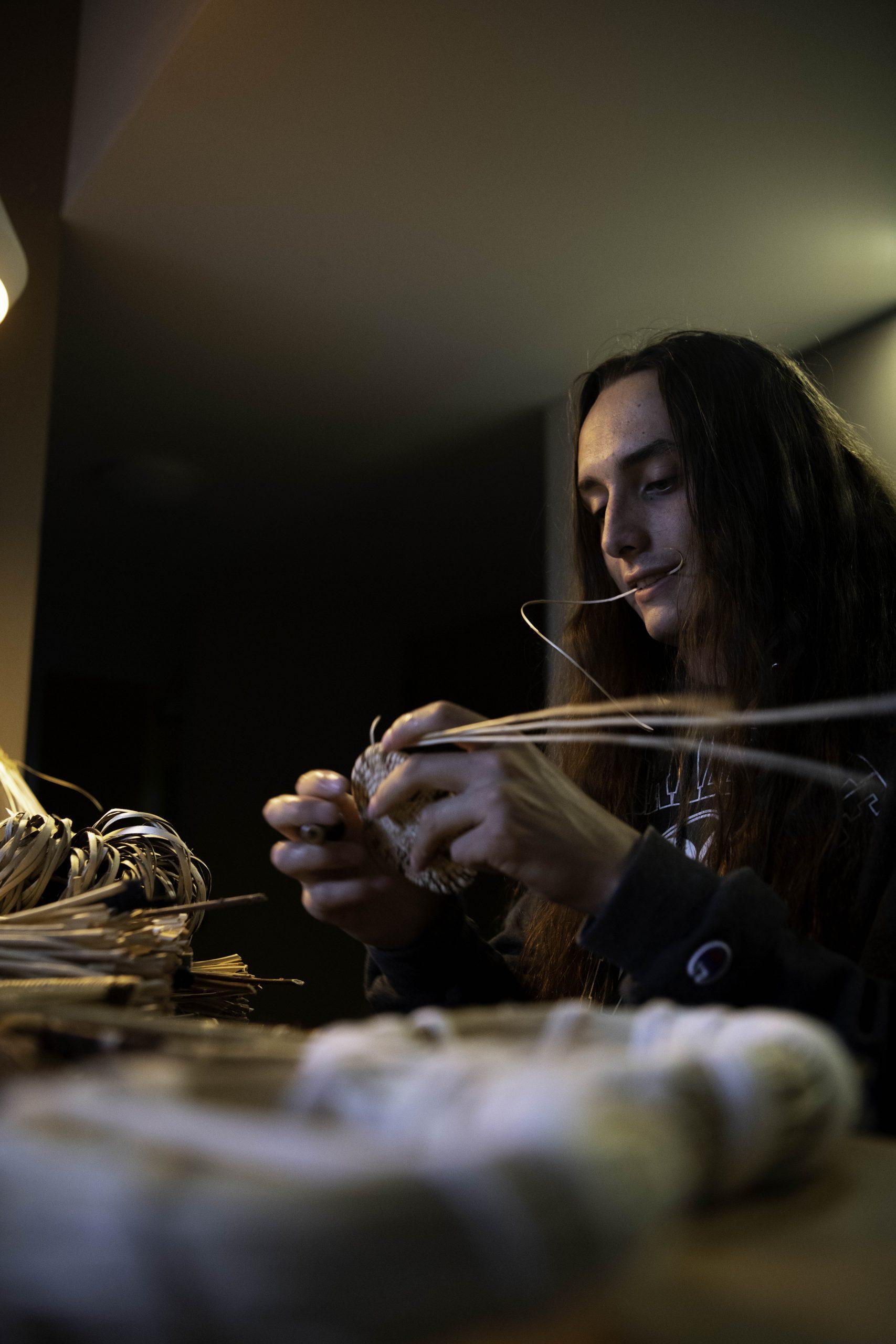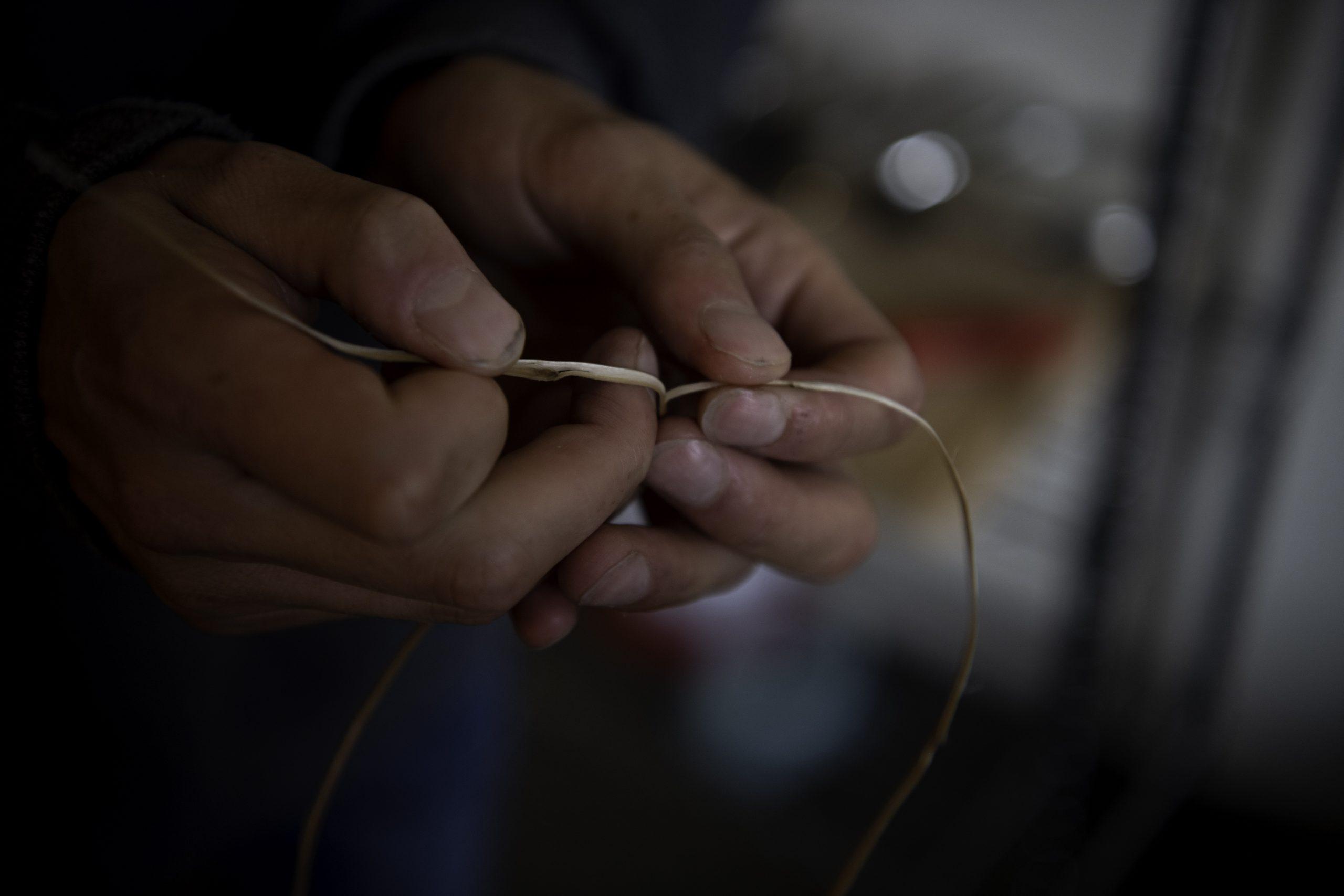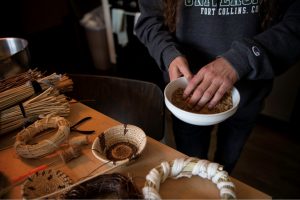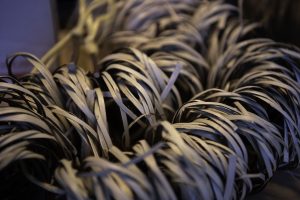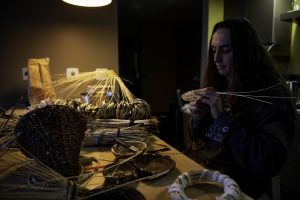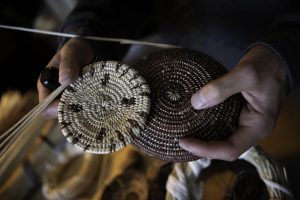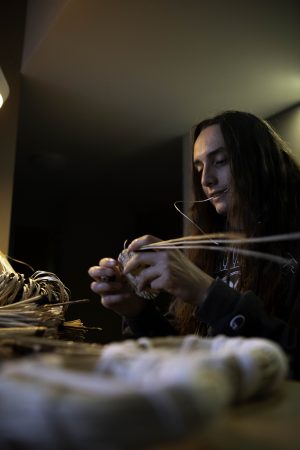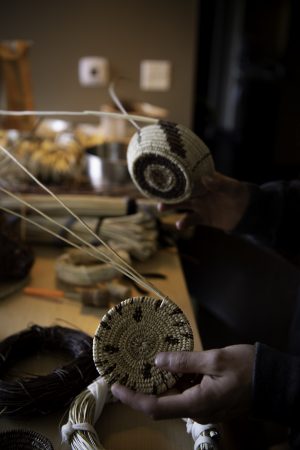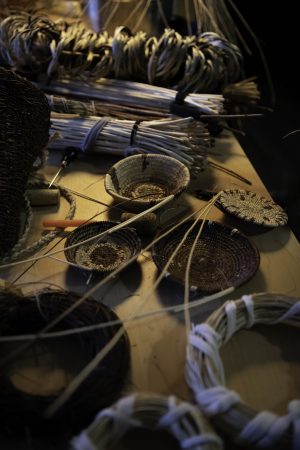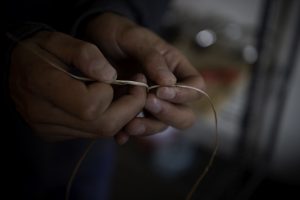According to Stephen Young of the Mountain Maidu tribe, baskets were the tools of life for Indigenous people. Baskets were a means of carrying water, food storage, cooking and even to carry babies.
Young is the first in five or more generations to weave traditional baskets. Young said traditional styles of basketry weaving include the coiled and twining methods. Young practices both styles, but the traditional style of the Mountain Maidu tribe is coiled, specifically coiling to the left.
Young explained that baskets are not simply seen as tools; they are seen as living things with spirit, prayer and time woven into them. The materials chosen for baskets are only gathered when certain omens appear, and before harvesting the materials, offerings such as prayers, candy, coins and songs are offered to the plants as a sign of respect. Young said that once harvested, the materials are soaked in water and skinned or split to make different sized baskets, colors, weaves, coils and patterns.
The patterns are often created from dreams and are not seen as merely decoration but rather an intertwining of the basket and the spirit of the design woven in Young said.
“Basketry is the representation of our culture,” Young said.
-
Stephen Young of the Mountain Maidu tribe holds a bowl of ground acorn that he uses to dye a certain material in his apartment on Colorado State University’s campus Oct. 12. The acorn is cooked in baskets and mixed with other materials to dye Bracken fern black. “When you soak a basket properly, first the stitches will expand, the foundation will expand and you can put water in it and it wont leak,” Young said. “(This) is how we’re able to cook in baskets as well.” (Garrett Mogel | The Collegian)
-
A coil of California redbud sits on Stephen Young’s kitchen table in his apartment Oct. 12. Young uses the Californian redbud to make hand-woven Northern Californian-style baskets. Young is the first in five or more generations of his family to weave basketry, learning for the past two years from tribal masters as well as on his own. “Basketry is the representation of our culture,” Young said. (Garrett Mogel | The Collegian)
-
Stephen Young of the Mountain Maidu tribe sits at his kitchen table weaving traditional tribal baskets Oct. 12. Young is the first in five or more generations of his family to weave basketry, learning for the past two years from tribal masters as well as on his own. “Baskets are the primary tools of life among all Californian Native people and many people in the Great Basin,” Young said. (Garrett Mogel | The Collegian)
-
Stephen Young holds the beginnings of a hand-woven basket and tray in his Colorado State University campus apartment Oct. 12. The baskets are coiled to the left, a tradition of Northern California tribes, and are made from California redbud. Young is the first in five or more generations of his family to weave basketry, learning for the past two years from tribal masters as well as on his own. (Garrett Mogel | The Collegian)
-
Stephen Young of the Mountain Maidu tribe sits at his kitchen table in his apartment Oct. 12. Young is the first in five or more generations of his family to weave basketry, learning for the past two years from tribal masters as well as on his own. “Basketry is the representation of our culture,” Young said. (Garrett Mogel | The Collegian)
-
Stephen Young of the Mountain Maidu tribe holds two of his hand-woven baskets in his apartment on Colorado State University campus Oct. 12. The bottom one will be a 16-inch-wide Milky Way patterned tray and the top will be a bird flock pattern. (Garrett Mogel | The Collegian)
-
Stephen Young of the Mountain Maidu tribe in his apartment on Colorado State University campus Oct. 12, holding a hand-woven, human ribcage-patterned basket designed for his osteology class. Young is the first in five or more generations of his family to make woven baskets. “I’m starting to have to create patterns so that I could pass them on,” Young said. (Garrett Mogel | The Collegian)
-
Stephen Young of the Mountain Maidu tribe sits at his kitchen table weaving traditional tribal basketry Oct. 12. Young is the first in five or more generations of his family to weave basketry, learning for the past two years from tribal masters as well as on his own. “Baskets are the primary tools of life among all Californian Native people and many people in the Great Basin,” Young said. (Garrett Mogel | The Collegian)
-
Traditional hand-woven baskets and material sit on Stephen Young’s kitchen table Oct. 12. Young is the first in five or more generations of his family to weave basketry, learning for the past two years from tribal masters as well as on his own. (Garrett Mogel | The Collegian)
-
Stephen Young of the Mountain Maidu tribe slits peeled California redbud to a uniform width before weaving with it Oct. 12. The wood is soaked in water before working with it. “While it was a traditional job, the weavers have fun doing this, so I don’t always pay attention to how long it takes,” Young said. (Garrett Mogel | The Collegian)
Garrett Mogel can be reached at photo@collegian.com or on Twitter @MountainManGman.
